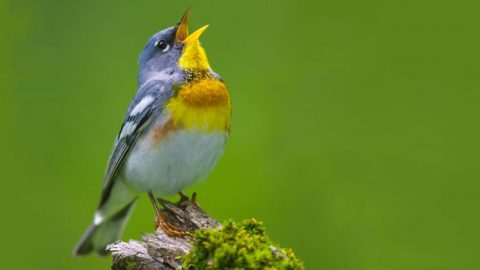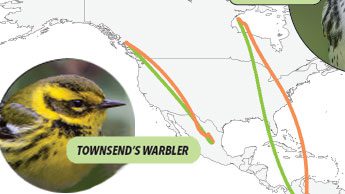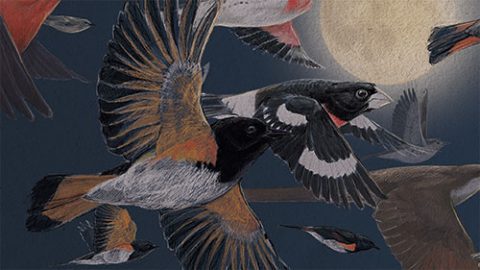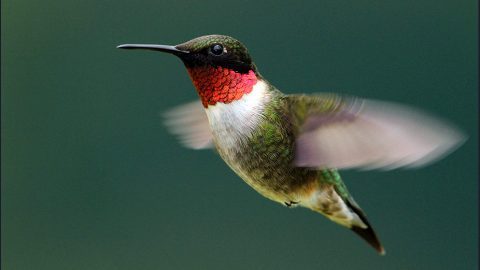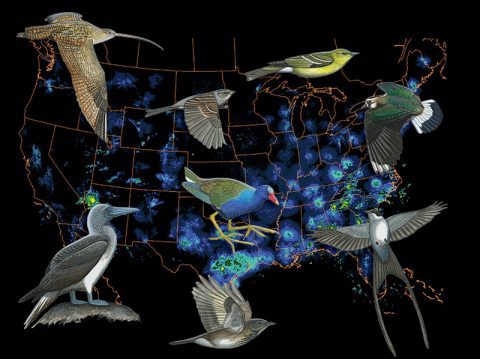Analysis: Big Data Reveals Big Picture of Migration
By Gustave Axelson
April 11, 2017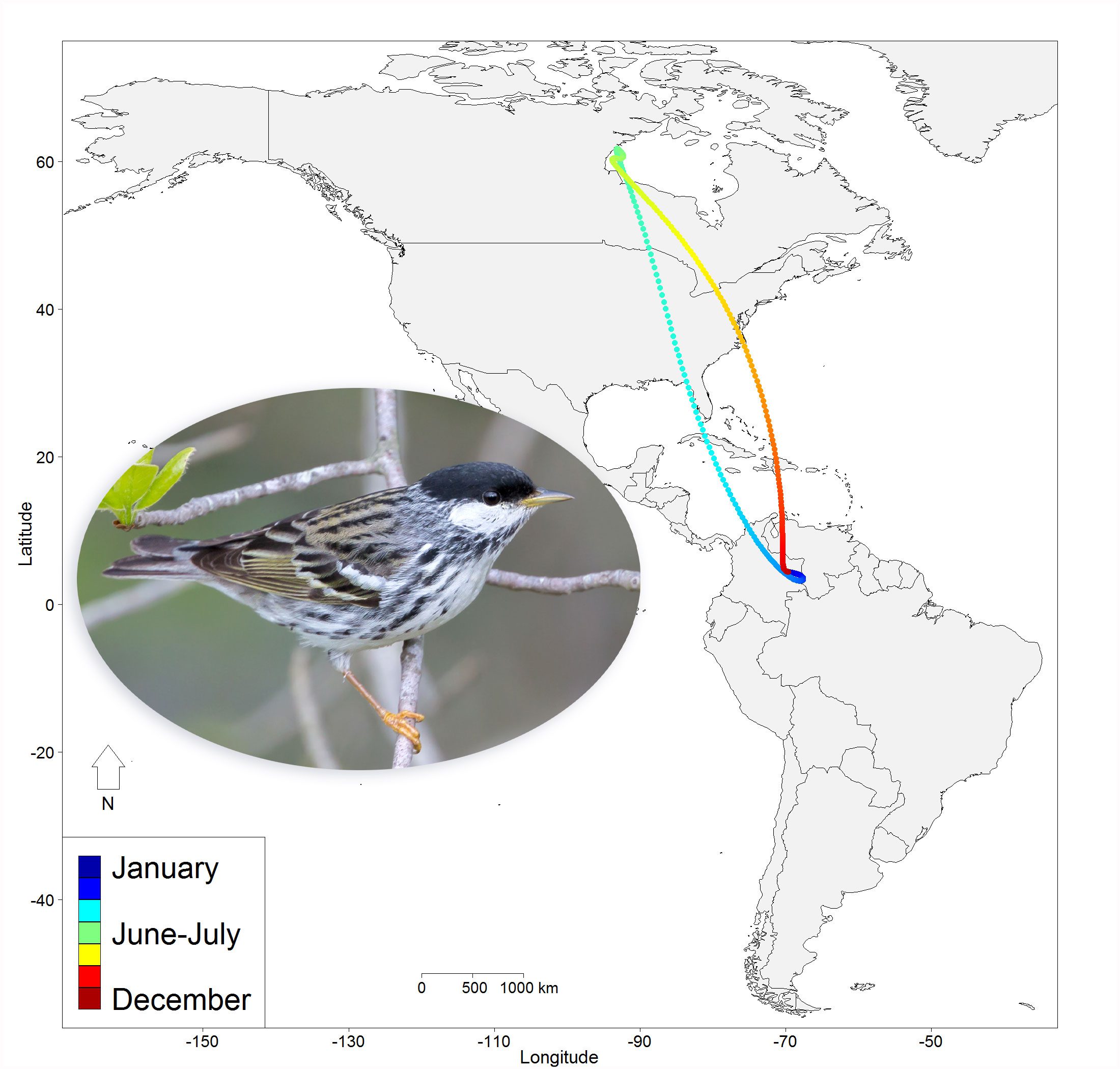
From the Spring 2017 issue of Living Bird magazine. Subscribe now.
Frank La Sorte is a macroecologist, that is, a scientist who investigates ecological questions at scales that span landscapes, even continents. A research ecologist in the Information Science program at the Cornell Lab of Ornithology, La Sorte combines radar images of massive clouds of birds with on-the-ground eBird observations to analyze how entire bird populations move across vast distances. In doing so, he has discovered some interesting patterns in bird migration.
Long-Distance Migrants Fly Faster
In 2013, La Sorte published an analysis of migration speeds for populations of 102 migratory species. He found that species that travel the longest distances tend to migrate faster. For example, populations of Black-billed Cuckoo, a long-distance migrant, move five times faster (about 50 miles per day) than populations of Field Sparrows, a short-distance migrant.
“Migration is an inherently dangerous activity, the period containing the highest mortality,” La Sorte says. “Birds in migration want to minimize time, energy expenditure, and risk.”
La Sorte, F. A., et al. 2013. Population-level scaling of avian migration speed with body size and migration distance for powered fliers. Ecology 94:1839-1847.
Eastern Birds Migrate in a Clockwise Loop
In further research, La Sorte and his colleagues discovered that many eastern North American bird species migrate in looping, clockwise routes. The driving factor appears to be wind conditions. Migrating along eastern routes in autumn—even out over open ocean off the East Coast—provides birds a path with less severe headwinds. In spring, these same species follow longer routes farther west across the Gulf of Mexico in order to capitalize on strong tailwinds.
La Sorte, F. A., et al. 2016. Convergence of broad-scale migration strategies in terrestrial birds. Proceedings of the Royal Society B: Biological Sciences 283:20152588.
Related Stories
Spring Migrants Follow a Green Wave
Springtime green-up has emerged as another factor that affects bird migration in La Sorte’s research. He analyzed migration patterns for more than 50 species and found that birds tend to follow the flush of new plant growth in spring—the so-called “green wave” that begins in March.
La Sorte’s study found that insectivorous species in the East, such as Black-throated Blue Warblers, showed a very tight correlation with areas showing green-up, which also correlates with insect hatches. In the West, insect-eating migrants such as Lazuli Buntings followed the topography of green river valleys and mountain foothills where insects emerged first.
La Sorte, Frank A., D. Fink, W. M. Hochachka, J. P. DeLong, and S. Kelling. 2014. Spring phenology of ecological productivity contributes to the use of looped migration strategies by birds. Proceedings of the Royal Society B. 281:20140984.
Some Birds May Migrate Faster in the Future
The latest research from La Sorte examines how weather conditions in the future may impact migratory bird populations. While climate change could mean a greater frequency of severe storms, the prevailing westerly winds at mid-latitudes in the East are also projected to decrease in strength by 20 percent during the autumn. That’s good news for fall migrants along the Atlantic seaboard, as it means that crosswinds will diminish and species such as Blackpoll Warblers and Pectoral Sandpipers will be less likely to be blown off course.
“Climate change research often focuses on warming temperatures, but for long-distance migratory birds, changes in wind speed and direction may have greater significance,” La Sorte says. “Our findings suggest weaker crosswinds may increase survivorship during a limited but critical portion of these species’ migration journey.”
La Sorte stresses that these findings do not address other implications of climate change for migratory birds, such as impacts to breeding and wintering habitats.
La Sorte, F. A., and D. Fink. 2017. Projected changes in prevailing winds for transatlantic migratory birds under global warming. Journal of Animal Ecology 86:273-284.

All About Birds
is a free resource
Available for everyone,
funded by donors like you
American Kestrel by Blair Dudeck / Macaulay Library
